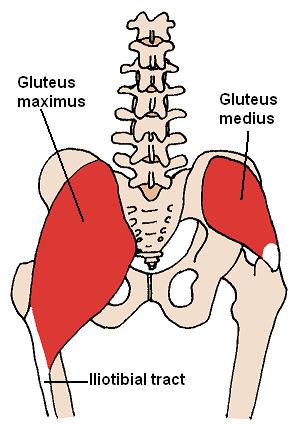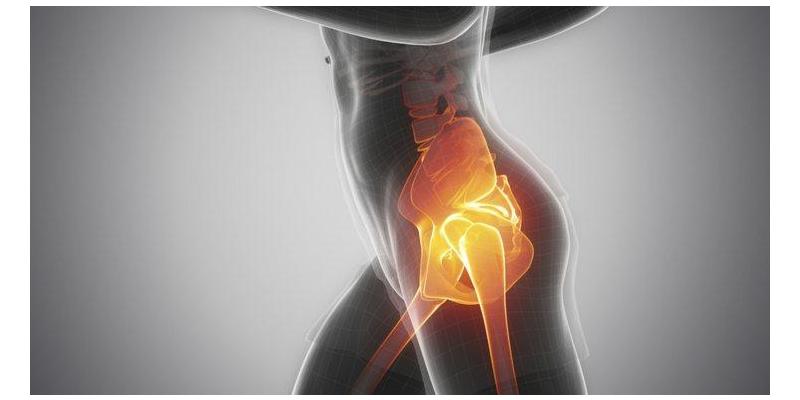Preventing Hip & Groin Injuries During Intense Workouts
Preventing Hip & Groin Injuries During Intense Workouts
Intense workouts such as running drills, crossfit or team sports always carry the potential for injuries. Some of the most common we see are hip and groin strains from weakness, overuse or instability. Because your legs, feet and back have to compensate when you don’t have normal range of motion in your hips, hip and groin injuries can quickly lead to a range of other seemingly unrelated problems. It’s therefore crucial to prevent strains before they have a chance to occur.
A pelvic strain will create a domino effect that can impact your entire body. Here we’ll discuss two important components of hip/groin injury prevention: strengthening and stretching. We’ll learn that a dynamic warmup and training that focuses on small muscle groups as well as large ones provides the best results for injury prevention.

When warming up and stretching, don't think of your hips or groin as isolated body parts but rather as connections between foot, knee, hip and back. Your hips and groin consists of a wide range of small and large muscles, sometimes referred to generally as the “adductors”, “abductors” or “hip flexors”.
Adductors & Abductors
Adductor muscles are the muscles that are responsible for moving your thighs inward and abductor muscles move them away. While some sports like skating do rely heavily on these muscles, the most common sports such as running, cycling, swimming and weight lifting largely focus on forward-facing movements. While that helps to tone your dominant muscle groups including the hamstrings and quads, your smaller muscles tend to be neglected. When your adductor and abductor muscles are weak, you're much more likely to experience instability and subsequent strains.
Hip Flexors
“Hip flexor” is a broad term for a collection of muscles that connect the top of the femur to the spine, hips, and groin. Because this group of muscles is so diverse, symptoms of overuse and injury can range from tightness and pain to reduced mobility and wide loss of sensation. This muscle group tends to be most susceptible to strains when we outdo ourselves on activities like running, and it’s prone to becoming sore and tired when we participate in side-to-side movements we’re not used to. That’s because the hip flexor doesn’t work alone. It requires assistance from other surrounding muscles to provide additional stability for the hip and knee. One critical muscle that's oftentimes overlooked is the gluteus medius, a hip abductor.
Overworking a weak gluteus medius can result in pain and tightness, which may have you instinctively reach for a foam roller or hurriedly get into a lunge stretch in an effort to eliminate some stiffness. However, if you have weak gluteus medius muscles, you're only treating part of the problem. To prevent tightness, soreness and groin weakness for good, it's important to strengthen this muscle.
To strengthen your gluteus medius, try side lunges or hip-abduction using a Theraband.
Therabands are easy, affordable and versatile. For this exercise, simply loop the band around both ankles and move one leg away from your body in a controlled motion. You can also accomplish hip abductor strengthening by shuffling side to side in a squat position, using the Theraband for resistance.
Strengthen your adductor muscles by squeezing a ball between your legs or by repeatedly crossing one foot over the other while wearing a resistance band.

Warmups
Use lunges to warm up and strengthen the hip flexors, which may become tight after running or cycling. Beginning with both feet together, take a large step forward. Now, transfer your weight onto your forward leg, and lower your hips to the floor in a vertical manner.
If you find that your knee is leaning toward your toe or has gone in front of the toe, you're placing too much pressure on your IT band and hamstring, overusing the muscles that attach to your knee. This can lead to inflammation and pain and should be avoided at all costs.
When doing a side lunge, begin with the feet shoulder widths apart, ensuring that your toes point forward. Now, take a very large step out to one side with your dominant foot. As you would with a squat, drop your hips down and back while shifting your weight to your heels. Your dominant leg will bend, and your non-dominant leg will remain straight. As with a front/back lunge, your knee should remain directly over the ankle.
Until you're comfortable with this exercise, it may help you to do it in front of a mirror where you can easily see and adjust your foot, knee and hip placement. When lunging, keep your knee stacked directly over your ankle while engaging your inner thigh, butt and quadricep.
Engage your body in dynamic movements such as light walking and leg swings before moving on to any deep stretches. While stretching alone may not reduce the incidence of muscular injuries, it has been shown to reduce stiffness and increase range of motion, ideal for athletes requiring additional flexibility, such as dancers or gymnasts. In addition to completing a warmup before beginning a stretch, you may find it helpful to apply heat to the area to further increase your range of motion.
Conclusion
It's important to begin every workout with a proper warmup. A warmup can incorporate both moving and stretching, however, research points to dynamic (movement) warmups as the safer and effective option when preparing your body for exercise because they help to lengthen the fascia while increasing your body's core temperature.
Hip and groin injuries can be prevented with a dynamic warmup that's designed to acclimate your body to movement. Always include warmups such as front and side leg swings, front and side lunges and high knees to help prevent strains in your hips and groin. Doing warmups and exercises that engage these muscles will decrease your odds of suffering a strain.

























